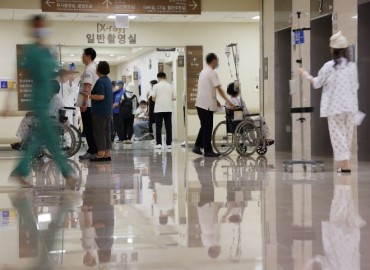SEOUL, Jan. 30 (Korea Bizwire) — South Korea’s female suicide rate is projected to worsen through 2030, rising from 15.1 to 16.6 per 100,000 people, even as the overall national suicide rate declines, according to a government health report.
The findings were published in the ‘2024 Key Indicator Analysis Report’ by the Ministry of Health and Welfare and the Korea Health Promotion Institute as part of the Fifth Comprehensive National Health Promotion Plan (2021–2030). The plan, updated every five years, outlines South Korea’s public health priorities and policy goals.
The government had initially set a 2030 target to reduce the female suicide rate to 12.8 per 100,000 from the 2018 baseline of 14.8. However, data from 2022 indicated an increase to 15.1, with projections suggesting a continued upward trend.
Conversely, suicide rates among men and the general population are expected to decline. The male suicide rate, which stood at 38.5 per 100,000 in 2018 and dropped to 35.3 in 2022, is projected to reach 28.1 by 2030. The overall suicide rate, which was 26.6 in 2018 and declined to 25.2 in 2022, is estimated to fall further to 22.4.
Despite this progress, South Korea still holds the highest suicide rate among OECD nations. In 2021, the country’s suicide rate stood at 24.3 per 100,000—far exceeding Lithuania’s 18.5, the second-highest among 36 OECD countries. Greece reported the lowest suicide rate at 3.9 per 100,000.
The report also warned of worsening health trends beyond suicide rates. Cancer, diabetes, and obesity prevalence among adults are all expected to rise by 2030. The projected increase in new cancer cases among men is from 338 per 100,000 in 2017 to 353.7 by 2030, while for women, the rate is expected to surge from 358.5 to 534.6.
Diabetes prevalence among men over 30 is anticipated to climb from 14.2% in 2018 to 16.5% by 2030, with a more modest rise among women from 9.1% to 9.3%.
Obesity rates are also set to rise sharply, with 59.6% of men expected to have a BMI over 25 by 2030, compared to 42.8% in 2018. Female obesity is projected to increase from 25.5% to 28.5% in the same period.
Lina Jang (linajang@koreabizwire.com)







